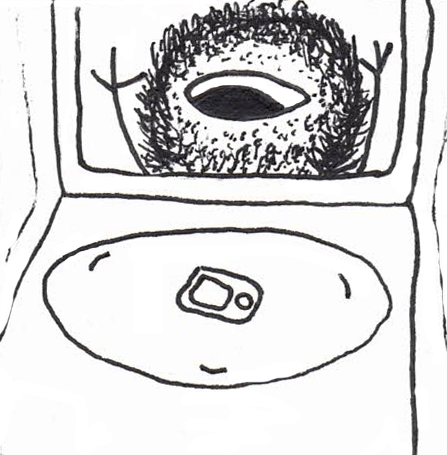If you’ve been online a while, you’ve probably heard of Apple Wave, an “update” that “allowed” phones to “charge” in the microwave. Don’t microwave your phone.
The Goal
An anonymous message board known for incredible coordination gets the idea to put together Apple Wave, a fake advertisement campaign. Apple Wave tells users that they can now microwave their phone to charge it. It wasn’t an immediate success; the successful version was several iterations deep as they worked out what an official Apple ads looked like together. The anonymous message board had finally gotten a graphic designer (or at least someone who knew how to assemble high-ish quality graphics) interested in the scheme, and away they went.
The Term “Life Hack”
Don’t microwave your phone. If the information doesn’t come from a respected source, don’t try it before researching. Remember that big explosion of people testing hacks on Youtube? That’s because for a while, life-hack folks were able to get away with just doing stuff or saying things that sound plausible but were usually useless – or dangerous in the worst cases. Nobody pictures molten caramel and a drill when they hear cotton candy, but hack channels slapped the two together. Sugar burns!
But nobody wanted to be wrong in the comments by calling it out – maybe the hack really did work. Many of them are tedious or annoying; nobody wanted to spend time on something that doesn’t work only so that they can say it doesn’t work with complete certainty. That caramel hack, for example, would mean getting a drill out, buying caramel candies if you don’t have them on hand, melting them in a pan (that you also have to wash), and either tending to your burns afterwards or trying to get a bad impression of sugar floss off the insides of a cardboard box, for what? Worse cotton candy? Cotton candy that is worse than the candy that went into making it?
The Youtuber trend of trying hacks might be annoying to some people, but at least someone is trying these things to verify that they don’t work.
Plausibility – “Nobody Made You Microwave Your Phone”
Plausible information is a perfect way to get people to do something they’d never normally do – common sense says you don’t put metal in a microwave, but the fake ad was so compelling people did it anyway. It appealed to authority as the information came from Apple, or at least, the ad had the Apple logo in it, which was as good as branding. A lot of tech seems totally opaque to people, and it’s difficult to blame them for assuming someone else knows their device better than they do. Apple has their Genius Bar for a reason, after all.
“Plausible”
It was plausible to a lot of people that a phone was microwaveable for charging. That’s the other essential part of a plausible troll/disinformation campaign! They completely removed any mention of a microwave’s normal functions to keep people from thinking too hard about what they were actually doing. Even the mechanism charging the phone was a ‘software update’ which could mean anything to a lot of ordinary people. When this troll post first popped up, the iPhone was still pretty new.
It only takes a few seconds in a microwave to seriously damage a phone. A microwave works roughly by shooting microwaves inside the box, where they reflect off the metal walls until they hit your food. This transfers the energy from the waves and causes the food molecules to heat up. When microwaves hit the phone, they either bounce off in a way they’re not supposed to (which causes sparks) or successfully hit the components, which aren’t meant to have that much energy. That causes electrical discharge which is bad for everything inside the phone. It can also cause battery rupture. If you remember that Samsung battery issue a few years back, you’ve seen how destructive lithium batteries are when the insides are exposed to air.
Red Flags
Some red flags you should look for when discovering information: Did it come straight from the suggested source (like the Apple website)? Or did you find it in a graphic somewhere else (like Facebook or Instagram)?
When you try to verify, is the information possible to find? Or does it seem like the graphic is the only source of the info?
Does it make sense with what you already know about that object?
Does it make sense that you’ve never seen or heard of the hack before, or haven’t thought of it yourself?
Are there special instructions in the comments to make the hack ‘work’ that were left out of the graphic?
Are the comments split into complete agreement and complete disagreement, where one party is insisting it works completely and the other is warning people NOT to try the hack under any circumstances?
If so, it might be a troll post.


